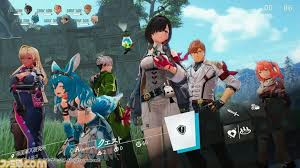
Based on the review by Tyler Treese, it seems the game didn’t live up to expectations, earning a mediocre 5/10 score. Here are the key points from the review:
- It’s a combat racing spin-off featuring characters from the Hyperdimension Neptunia series
- The writer has a history with the franchise, having reviewed a previous game for PS3
- While the character interactions and humor remain series highlights, they couldn’t save this title
- The gameplay involves riding motorcycles to collect “Dogoos” (parodies of Dragon Quest slimes)
- Major criticisms include:
- Uninteresting stages
- Repetitive gameplay with little depth
- Extremely short runtime (about 2 hours)
- Limited replay value unless going for the Platinum trophy
The reviewer mentions that Neptunia spin-offs can sometimes be fun by trying new approaches with familiar characters. Still, this particular game “is stuck in neutral and isn’t able to shift into high gear.”

Hyperdimension Neptunia Franchise Analysis
Overview and Origins
The Hyperdimension Neptunia franchise began in 2010 with the release of the original game for PlayStation 3, developed by Compile Heart and Idea Factory. The series was created as a meta-commentary on the video game industry, with its most distinctive feature being the anthropomorphization of gaming consoles and companies as cute anime girls (known as “Console Patron Units” or CPUs). The name “Neptune,” the main protagonist, is a reference to Sega’s canceled “Neptune” console.
Core Premise and Setting
The franchise takes place in a world called “Gamindustri,” divided into four nations:
- Planeptune (representing Sega)
- Lastation (representing PlayStation)
- Lowee (representing Nintendo)
- Leanbox (representing Xbox)
Each nation is ruled by a goddess who embodies that console’s characteristics. The series cleverly parodies gaming history, industry trends, console wars, and gaming culture through its characters and storylines.

Gameplay Evolution
The franchise has seen significant evolution in its gameplay:
- Main Series RPGs: Started as turn-based JRPGs with positioning elements and combo systems
- Remakes: The “Re; Birth” series reimagined the first three games with improved mechanics
- Action RPGs: Titles like Hyperdimension Neptunia U: Action Unleashed adopted hack-and-slash gameplay
- Strategy RPGs: “Hyperdevotion Noire” featured tactical grid-based combat
- Platformers: “Super Neptunia RPG” adopted 2D side-scrolling mechanics
- Spin-offs: Various genres ,including idol simulators, FPS, and now racing games

Character Design Philosophy
The franchise is known for its distinctive character designs that blend moe aesthetics with technology concepts:
- Main CPUs: Neptune (Sega), Noire (PlayStation), Blanc (Nintendo), and Vert (Xbox)
- CPU Candidates: Younger sister characters representing handheld consoles
- Makers: Characters representing game developers and publishers
- Oracles: Characters representing operating systems or platforms
Each character’s personality reflects stereotypes or actual traits of their real-world counterparts (e.g., Noire/PlayStation being a hardworking perfectionist, Blanc/Nintendo having a calm exterior but explosive temper).
Narrative Themes
Despite its comedic tone, the series explores themes such as:
- Industry competition and cooperation
- Balancing tradition with innovation
- Game piracy (represented by antagonist Arfoire)
- Balancing goddesses’ duties with personal relationships
- The rise and fall of gaming companies and platforms

Commercial Performance and Reception
The franchise has carved out a sustainable niche in the gaming market:
- Started as a cult classic with modest sales
- Grew significantly through digital distribution and PC ports
- Found success in the West despite its niche Japanese aesthetic
- Critical reception has been mixed to positive, with praise for humor but criticism for repetitive gameplay and fan service
Cultural Impact
Hyperdimension Neptunia has had several notable cultural impacts:
- Pioneered the trend of anthropomorphizing tech concepts as anime characters
- Created a successful model for meta-commentary in Japanese games
- Developed a highly dedicated fan community
- Expanded beyond games into anime, manga, and merchandise
Business Model Evolution
The franchise has adapted its business approach over time:
- Heavy use of DLC and cosmetic items
- Frequent remakes and remasters across platforms
- Leveraging digital distribution to reach global audiences
- Collaborations with other niche franchises

Recent Developments
Prior to the disappointing “Neptunia Riders VS Dogoos,” the franchise had been experiencing a revival with:
- More ambitious mainline titles
- Experimental spin-offs exploring new genres
- Increased production values
- Mobile game expansions
Franchise Strengths and Weaknesses
Strengths:
- Unique premise and setting
- Self-aware humor and industry satire
- Memorable and distinct characters
- Flexibility to explore different genres
- Strong fan community loyalty

Weaknesses:
- Inconsistent game quality
- Over-reliance on fan service
- Repetitive storylines in some entries
- Spin-offs often lacking in depth (as seen in the Dogoos racing game)
- Risk of franchise fatigue from frequent releases
The franchise represents an interesting case study in how niche Japanese properties can find sustainable success through adaptability, fan engagement, and leveraging their unique identity in a crowded market.
With Atelier Yumia: The Alchemist of Memories & the Envisioned Land, I was not totally sure what to anticipate. It was my first time playing Gust’s Atelier series, which I had mostly assumed were role-playing games with a crafty and laid-back theme.
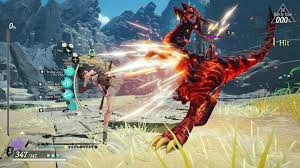
I would be attempting a new series of games, and the series was experimenting with some new stuff, so it worked out nicely. Yumia is a new take on the Atelier series. Although I had anticipated becoming engrossed in roleplaying and adventure, I ended up becoming completely absorbed in something else: gathering as much stuff as my bag could hold, running back to my atelier like a rat to a hovel, and creating and building until the bag was empty.
I was not sure what to expect from Atelier Yumia: The Alchemist of Memories & the Envisioned Land. I had believed that Gust’s Atelier series were role-playing games with a crafty and casual atmosphere, but this was my first time playing them.
It worked out well because I would be trying a new series of games, and the series was experimenting with some new things. As it happens, Yumia is a fresh interpretation of the Atelier series. I expected to become lost in role-playing and adventure. Still, instead, I became totally absorbed in something else: packing as many items as my bag could contain, racing back to my atelier like a rat to a hovel, and continuing to create and build until the bag was empty.

For instance, your staff doubles as a gun, and you can make bullets with a few simple materials to shoot at switches, shrines, or even just nodes you wish to mine. Shooting fruit from a tree is a never-ending activity.
However, there is a lot of gathering, which is challenging for people who enjoy exploring and discovering new items to collect. There will be discoveries and accompanying plants in every new zone or biome. When you discover something new, you receive large pop-ups, and when new recipes or innovations are available back at base, you get a little ping on your screen.
After that, you go back to an atelier and begin creating. It is captivating, even if I was expecting it to be in-depth. The ability to disassemble a lot of things into their constituent parts and then reassemble them, strengthening them as you go, is one aspect of Atelier Yumia’s synthesization that I genuinely appreciate. Consider my starting staff. It was time for an upgrade at one point. Well, I needed some ingots for my staff. I have two options: either I walk through the menu and take my time choosing the nodes and ingredients I use to infuse my ingots, investing high-value resources in each to improve quality, resonance, and other aspects. My gun staff now improves even more when I use those ingots as ingredients, and its quality and resonance also increase.
Returning from a long journey of discovery and collecting plants, rocks, and fauna, and then combining all of that into a new alchemical weapon or component, is incredibly satisfying. According to what I gather, that has been a defining characteristic of the Atelier series, and it is evident here. However, I really enjoy the feeling of discovering new and unseen fauna that can be magically zapped into a crazy new scythe because the game takes an open-world approach and offers a ton of areas to explore.
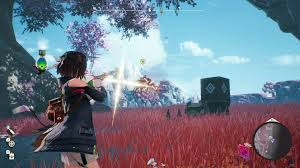
As you venture farther and farther into the continent, building bases provides another layer that allows you to expand the ideal outpost. Campsites provide brief breaks, but as you explore the landscape and remove more of the manabound fog, large bases also appear.
It does feel a little picky to adhere these walls, floors, and fixtures together. Random geometry, such as a boulder in the centre of the build area, might occasionally throw everything off balance, although snapping can help. Nevertheless, it is a pleasant sensation to set up a new outpost and watch the happiness meter climb. As you add more furnishings, couches, beds, and bookcases, both party members and NPCs will interact with them when you visit. It functions similarly to a small home away from your atelier, and you can further develop your skills by adding projects like a warehouse or greenhouse.
The Pioneering Effort is the thread that connects everything. It is a to-do list that is divided into categories such as crafting, gathering, and combat. The percentage of the region you are in increases with each successive checkmark, and reaching specific completion milestones unlocks new tools, such as the previously mentioned greenhouses or some new décor.
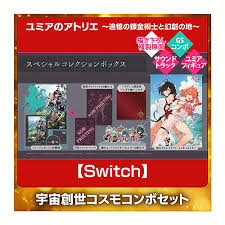
Together, these mechanisms have successfully and often diverted my attention from advancing with the primary mission. While the plot has been a little slow-burning even at the fifteen-hour mark, the characters are engaging, particularly Yumia, who is continuously battling her legacy and the public’s dislike for alchemy. I love having a narrative framework around everyday survival-genre endeavours.
I frequently find myself straying from the primary quest markers in order to gather more resources, investigate other areas, establish new base camps, and expand the horizon. Because I wanted to explore what new items I could add to my synthesization pool for later, I even ended myself going through a region that the game obviously meant for me to tackle later in the plot. Atelier Yumia offers small projects for you to do all over the world.
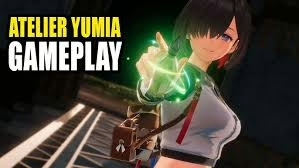
I am a newbie, so I can not really comment on how well this entry continues the heritage of almost thirty years. However, Atelier Yumia has everything you could want if you have ever wished for a comfortable, single-player crafting/gathering experience centred around an RPG environment with a ton of things to cross off your list.
A demo is currently accessible on Steam, and the game will be released on March 20.

Maxthon
When it comes to staying safe online, using a secure and private browser is crucial. Such a browser can help protect your personal information and keep you safe from cyber threats. One option that offers these features is the Maxthon Browser, which is available for free. It comes with built-in Adblock and anti-tracking software to enhance your browsing privacy.
By utilising Maxthon Browser, users can browse the internet confidently, knowing that their online activities are shielded from prying eyes. The integrated security features alleviate concerns about potential privacy breaches and ensure a safer browsing environment. Furthermore, the browser’s user-friendly interface makes it easy for individuals to customise their privacy settings according to their preferences.
Maxthon Browser not only delivers a seamless browsing experience but also prioritises the privacy and security of its users through its efficient ad-blocking and anti-tracking capabilities. With these protective measures in place, users can enjoy the internet while feeling reassured about their online privacy.
In addition, the desktop version of Maxthon Browser works seamlessly with their VPN, providing an extra layer of security. By using this browser, you can minimise the risk of encountering online threats and enjoy a safer internet experience. With its combination of security features, Maxthon Browser aims to provide users with peace of mind while they browse.
Maxthon Browser is a reliable choice for users who prioritise privacy and security. With its robust encryption measures and extensive privacy settings, it offers a secure browsing experience that gives users peace of mind. The browser’s commitment to protecting user data and preventing unauthorised access sets it apart in the competitive web browser market.
